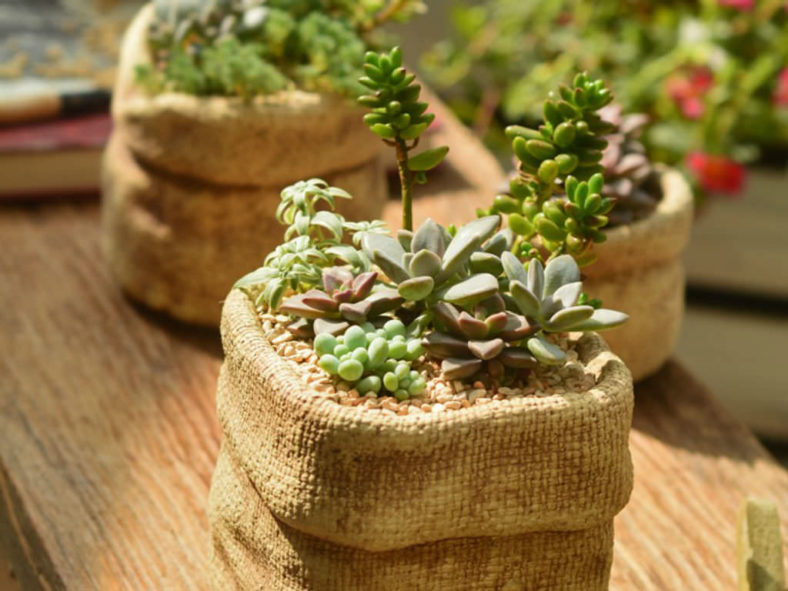Succulents are undoubtedly growing in popularity. They come in dozens of varieties, boasting different colors and shapes that can be mixed and matched to create a centerpiece or other home decorations. If you are new to gardening or have had bad luck with houseplants in the past, try your hand at caring for succulents indoors.
Most succulents are grown outdoors but are brought indoors during the winter months. It is possible to grow succulents indoors year-round, though. You may be familiar with some succulents, like Aloe vera, Jade Plant, and Snake Plant.
Environment
While succulents can also be placed outdoors during the growing season, they should be kept indoors in a bright, sunny location.
Most succulents thrive in houses with relative humidity between 10 and 30 percent. Keep succulents away from drafty locations.

Light
Rely on natural lighting if possible when growing succulents indoors.
If necessary, you can use artificial lighting instead of natural light or in combination with natural light. If you use grow lights, keep them 6 to 12 inches (15 to 30 cm) above succulents and on for 12 to 16 hours daily.
Soil
Plant succulents in a well-draining soil mix. Soil that does not drain well may contribute to root and stem rot.
Consider planting succulents in porous containers with drainage holes, like unglazed terracotta or clay pots.
Watering
Succulents do not require as much water as some other houseplants.
Water sparingly. Allow the soil to dry out completely before watering succulents. Allow the water to drain out, then discard the excess water. If you overwater succulents, the stems and roots may rot, and the leaves will drop. If you have not watered enough, succulent leaves will wilt.
Avoid watering in frequent small amounts. This can affect growth by making plants sickly and causing roots to become weak and shallow. Also, be careful not to water too much during winter, the dormant period for most succulents.
Fertilizer
Succulents can be fertilized with houseplant food diluted to half its recommended rate. Houseplant food should be higher in phosphorus than nitrogen.
During the growing season, fertilize succulents once or twice a month.
Pest Control
Sometimes, succulents are affected by mealybugs, scales, and spider mites. To control mealybugs and scales, soak cotton swabs in rubbing alcohol and dab the plant. To control spider mites, spray succulents with insecticidal soaps.
Source: farmanddairy.com
Links
- Succupedia: Browse succulents by Scientific Name, Common Name, Genus, Family, USDA Hardiness Zone, Origin, or cacti by Genus